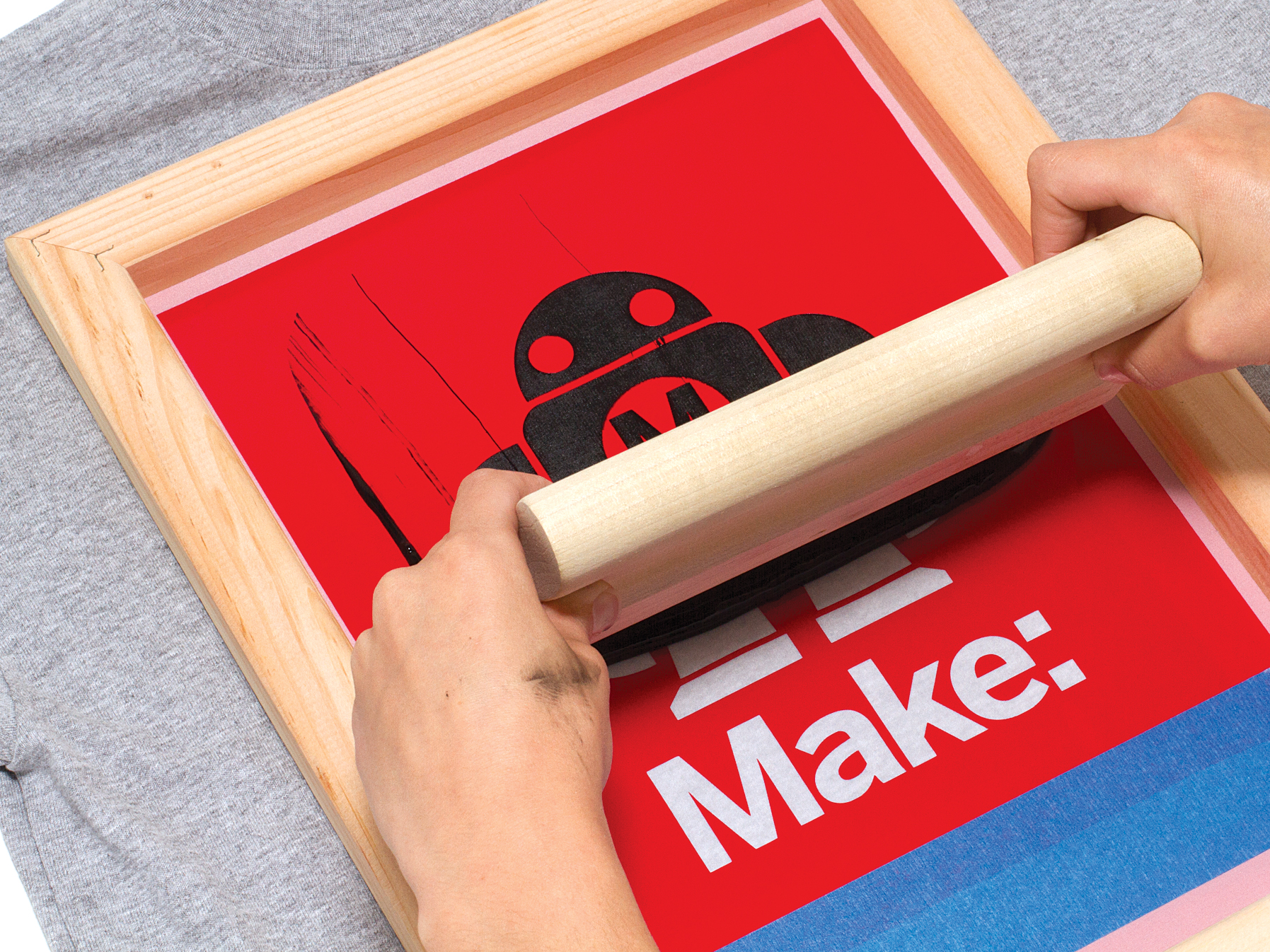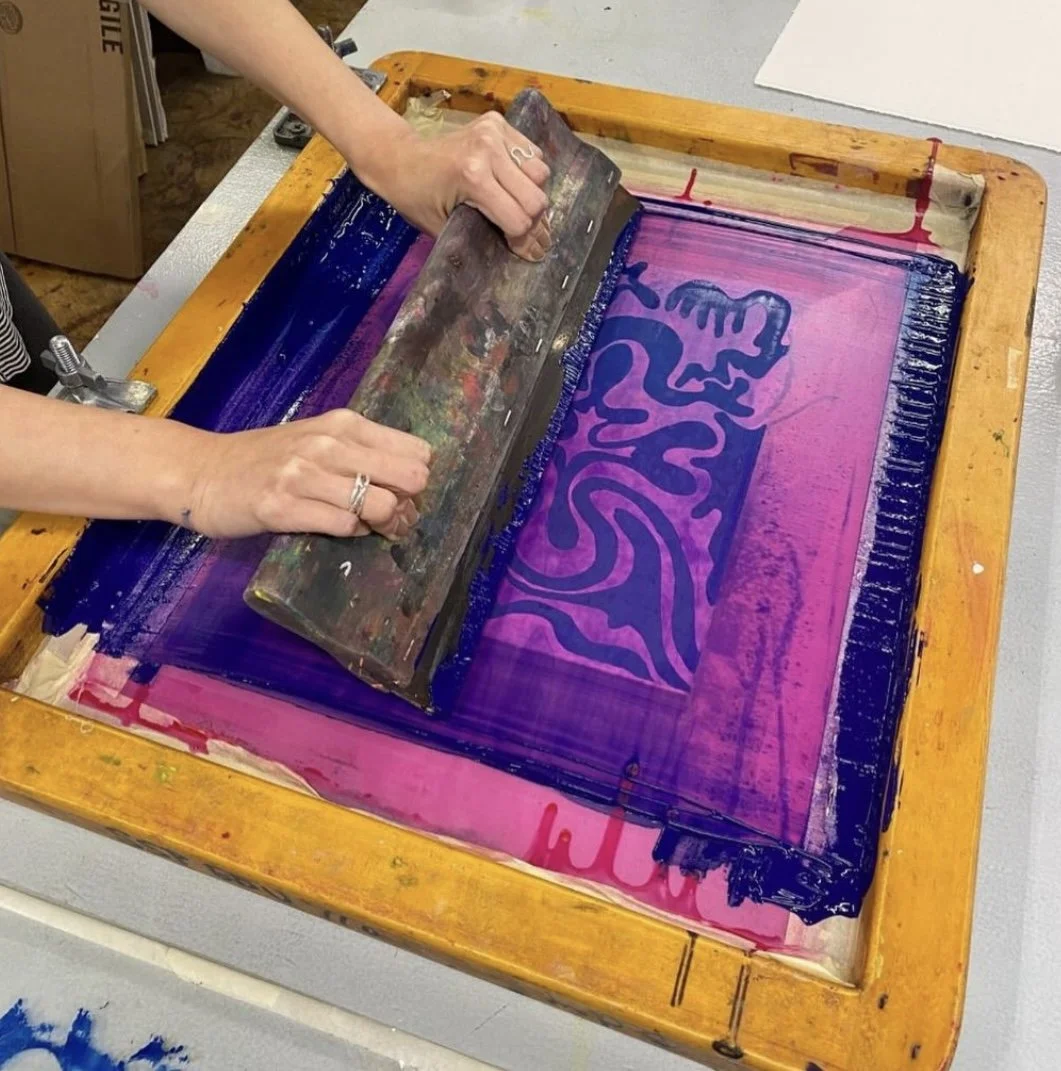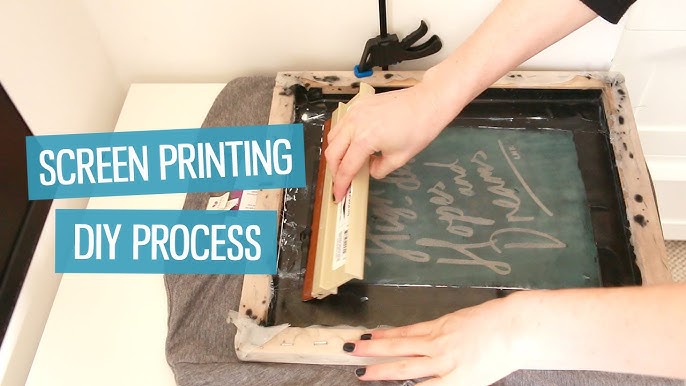ChatGPT said: How 10:9 Design Texas is leading the screen printing industry
Wiki Article
Discover the Numerous Sorts Of Screen Printing Techniques for Your Following Project
Screen printing supplies a diverse series of techniques that can improve any innovative task. From conventional approaches like serigraphy to modern technologies such as direct-to-garment printing, each approach has its special advantages. Specialty choices, consisting of metallic and green inks, present a lot more opportunities. Understanding these methods can substantially impact the final result. The difficulty exists in picking the most suitable method for particular requirements and preferred results. What variables should one consider?
The Fundamentals of Screen Printing
Although screen printing may seem complicated, it is fundamentally a simple process that involves moving ink via a mesh screen onto different surfaces. The method begins with the creation of a pattern, which specifies the design to be printed. This pattern is connected to a mesh screen, normally constructed from polyester or nylon. As soon as the pattern is in place, ink is related to the screen and pushed through the mesh utilizing a squeegee, causing the preferred pattern being printed on the underlying product.Screen printing can be carried out on a wide variety of substratums, including textile, paper, and plastic, making it a flexible choice for numerous projects. The procedure allows for intricate styles and vibrant shades, making it popular in markets such as art, style, and advertising. Recognizing these fundamentals outfits individuals with the fundamental expertise needed to discover more sophisticated strategies in screen printing.
Conventional Screen Printing Techniques
Typical screen printing techniques have been used for centuries, preserving the craftsmanship and creativity of this approach. This method uses a mesh screen to move ink onto a substrate, such as fabric or paper, enabling for resilient and vivid layouts. The process begins with creating a pattern, which blocks particular locations of the screen to manage where the ink will certainly be applied.One preferred method is serigraphy, typically made use of for imaginative prints and minimal versions. Another is making use of water-based inks, which are environmentally friendly and provide a soft feel on fabrics - 10:9 Design Screen Printing. In addition, standard techniques can include hand-operated printing, where craftsmens apply ink with a squeegee, ensuring accuracy and interest to detail
These strategies stay valued in the market for their tactile quality and the one-of-a-kind appearances they create, attracting both consumers and developers who appreciate the heritage of screen printing.
Digital Screen Printing Innovations
As the need for faster production and customization in the printing sector has risen, digital screen printing innovations have actually emerged as a game-changer. This modern technology mixes traditional screen printing approaches with digital procedures, enabling quick prototyping and elaborate layouts that were previously hard to accomplish. One substantial improvement is the introduction of direct-to-garment (DTG) printing, which assists in top quality, full-color prints on various fabrics without the need for displays. In addition, developments in ink formulas have caused environmentally friendly alternatives that maintain vivid colors while lessening ecological impact. The usage of automated systems better improves manufacturing, lowering labor costs and improving accuracy. These advancements not just provide to tiny batch orders and customized designs yet likewise enable for quicker turn-around times, making them ideal for services concentrated on meeting client demands in a fast-paced market. Digital screen printing, as a result, stands for an essential development in the domain of printing techniques.Specialty Screen Printing Approaches
Checking out specialized screen printing techniques exposes a diverse range of methods that press the boundaries of creative thinking and performance in the printing industry. Among these, glow-in-the-dark inks offer an one-of-a-kind aesthetic effect, making designs come alive in low-light conditions. Metallic inks, known for their sparkling surface, add a touch of luxury to published products. Another ingenious technique is discharge printing, which click to find out more gets rid of color from the textile rather than including ink, leading to a soft, classic feel. High-density printing creates a raised texture externally, boosting responsive interaction. In addition, water-based inks are gaining popularity for their lively colors and decreased environmental effect. Each of these specialty techniques provides to details style demands, enabling artists and brand names to create standout products that resonate with their audiences. By leveraging these methods, companies can boost their screen printing jobs to new elevations, making certain remarkable perceptions.Eco-Friendly Screen Printing Options
Environment-friendly screen printing choices are gaining grip as the industry changes in the direction of sustainability. Lasting ink choices and the usage of biodegradable materials are crucial components in decreasing the environmental effect of the printing process. By adopting these techniques, screen printers can add to a more sustainable future while preserving high-grade results.visit the website
Lasting Ink Choices

Biodegradable Products Usage
As the screen printing market advances, the incorporation of eco-friendly products is becoming significantly essential for environmentally mindful techniques. Producers and designers are now checking out inks and substrates made from all-natural, eco-friendly resources that decompose extra efficiently than conventional counterparts. These naturally degradable options minimize plastic waste and lessen environmental influence, aligning with the growing need for sustainable products.
Typical instances include water-based inks and organic cotton textiles, both of which minimize unsafe chemicals and promote eco-friendliness. Brands that embrace these products often improve their market charm, bring in customers who prioritize sustainability. As understanding of ecological concerns continues to rise, the shift towards naturally degradable products in screen printing is most likely to gain momentum, fostering a greener market requirement.
Picking the Right Strategy for Your Task
How can one identify the most ideal screen printing technique for a specific project? The decision depends upon a number of variables, including the product to be published on, the intricacy of the design, and the desired production quantity - 10:9 Design contact. For instance, direct-to-garment printing is suitable for detailed styles with many colors, while conventional screen printing excels for larger runs of less complex graphics
Furthermore, consideration of the end-use of the published product is important. For outdoor applications, strategies that offer sturdiness and weather resistance, such as plastisol ink, may be preferred. Alternatively, environmentally-conscious jobs may gain from naturally degradable products or water-based inks.
Ultimately, recognizing the task's special requirements permits for an educated choice, making certain both visual appeal and useful durability. By evaluating layout complexity, product compatibility, and production range, one can successfully select one of the most appropriate screen printing strategy to meet their task's goals.
Regularly Asked Questions
What Is the Background of Screen Printing?
Screen printing came from old China around 1000 AD, progressing through Japan and Europe. By the 20th century, it ended up being popular in industrial art and style, reinventing just how designs were generated and distributed around the world.
How Do I Prepare Artwork for Screen Printing?
To prepare artwork for screen printing, one should guarantee high resolution, use a suitable color setting, develop different layers for each and every shade, and transform message to details, guaranteeing compatibility with the printing procedure and wanted end result.What Products Are Ideal for Screen Printing?
The best products for screen printing include high-quality inks, durable displays, and appropriate substrates like cotton, polyester, or blends. Additionally, making use of proper emulsion and squeegees can boost the printing process and outcomes.Can I Screen Publish in your home?
Yes, screen printing in your home is possible. With the appropriate materials, arrangement, and methods, individuals can develop high-grade prints. Nevertheless, mindful factor to consider of web link workspace and tools is crucial for successful outcomes.
What Prevail Blunders in Screen Printing?
Common mistakes in screen printing include inappropriate direct exposure times, inadequate ink consistency, misalignment of screens, insufficient cleaning of materials, and neglecting to evaluate prints. These errors can compromise the high quality and accuracy of the final product.Screen printing may seem complex, it is fundamentally a straightforward process that involves transferring ink with a mesh screen onto different surfaces. As the demand for faster production and customization in the printing industry has actually risen, electronic screen printing technologies have actually arised as a game-changer. Checking out specialty screen printing methods reveals a varied selection of strategies that press the limits of creative thinking and functionality in the printing sector. The ideal products for screen printing include premium inks, resilient displays, and appropriate substratums like cotton, polyester, or blends (10:9 Design LLC Company). Typical mistakes in screen printing consist of incorrect exposure times, poor ink uniformity, misalignment of screens, not enough cleaning of materials, and disregarding to evaluate prints
Report this wiki page